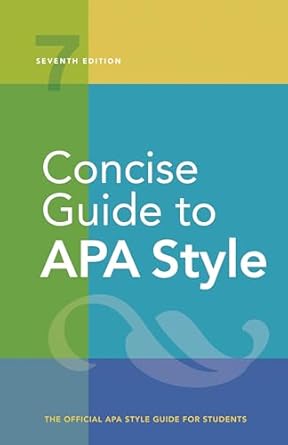[toc]
mastering reference lists a quick guide
Concise Guide to APA Style: 7th Edition (OFFICIAL)
Page 238 Review
The Art of Citing: A Deep Dive into Reference Lists
In the realm of academic writing, the reference list stands as a testament to the intellectual honesty and scholarly rigor of the author.
It’s more than just a formality; it’s a roadmap that allows readers to trace the origins of ideas and engage with the broader scholarly conversation.
This ebook excerpt delves into the intricacies of crafting effective and accurate reference list entries, highlighting the importance of meticulousness and adherence to established guidelines.
Understanding the Anatomy of a Reference Entry
The excerpt begins by illustrating the key components of a typical journal article reference.
As shown in Figure 9.1, a reference entry is comprised of the following elements:
- Author: “Chat, P.”
- Date: “(2018).”
- Title: “Sensitivity to the Evaluation of Others Emerges by 24 Months”
- Source: “Developmental Psychology, 54(9), 1723-1734. https:// doi.org/ 10.1037/ ‘dev0000548”
Each of these components serves a specific purpose.
The author and date establish the origin and temporal context of the work, while the title provides a concise summary of its subject matter.
The source information, including the journal name, volume number, issue number, page numbers, and DOI, enables readers to locate the original publication.
The Significance of Punctuation
The excerpt emphasizes the crucial role of punctuation in structuring reference list entries. “Use punctuation marks within reference list entries to group information.” The proper use of periods, commas, and parentheses ensures clarity and readability. “Ensure that a period appears after each reference element—that is, after the author, date, title, and source.
However, do not put a period after a DOI or URL because it may interfere with link functionality.” This seemingly minor detail can have a significant impact on the accessibility and utility of the reference list.
Further, the excerpt provides specific guidelines for using punctuation within elements: “Use punctuation marks (usually commas or parentheses) between parts of the same reference element.
For example, in a reference for a journal article, use a comma between each author’s last name and initials and between different authors names, between the journal name and the volume number, and between the journal issue number and the page numbers.
Do not use a comma between the journal volume and issue numbers; place the issue number in parentheses instead.”
Italics: A Matter of Convention
Another important aspect highlighted is the use of italics. “Italicize punctuation marks that appear within an italic reference element (e.g., a comma or colon within a book title).
Do not italicize punctuation between reference elements (e.g., the period after an italic book title).” This seemingly subtle rule ensures consistency and adheres to established academic conventions.
Why Accuracy Matters
The excerpt implicitly underscores the importance of accuracy in reference listing.
Errors in author names, dates, titles, or source information can lead to confusion and frustration for readers attempting to locate the original works.
Moreover, inaccurate references can damage the credibility of the author and undermine the integrity of the research.
Beyond the Basics
While the excerpt focuses on the fundamental elements of reference listing, it’s important to note that different citation styles (e.g., APA, MLA, Chicago) have their own specific rules and formatting guidelines.
Researchers must familiarize themselves with the appropriate style for their discipline and adhere to its conventions consistently.
Failure to do so can result in inconsistencies and errors that detract from the overall quality of the work.
Conclusion: Mastering the Art of Citation
Creating accurate and well-formatted reference lists is an essential skill for any researcher or academic writer.
By paying close attention to the details of punctuation, italics, and citation style, authors can ensure that their references are clear, comprehensive, and reliable.
This excerpt serves as a valuable starting point for understanding the key principles of reference listing and mastering the art of citation.
Buy full ebook for only $18: https://www.lulu.com/shop/american-psychological-association/concise-guide-to-apa-style-7th-edition-official/ebook/product-rmzpq54.html?page=1&pageSize=4


Leave a Reply